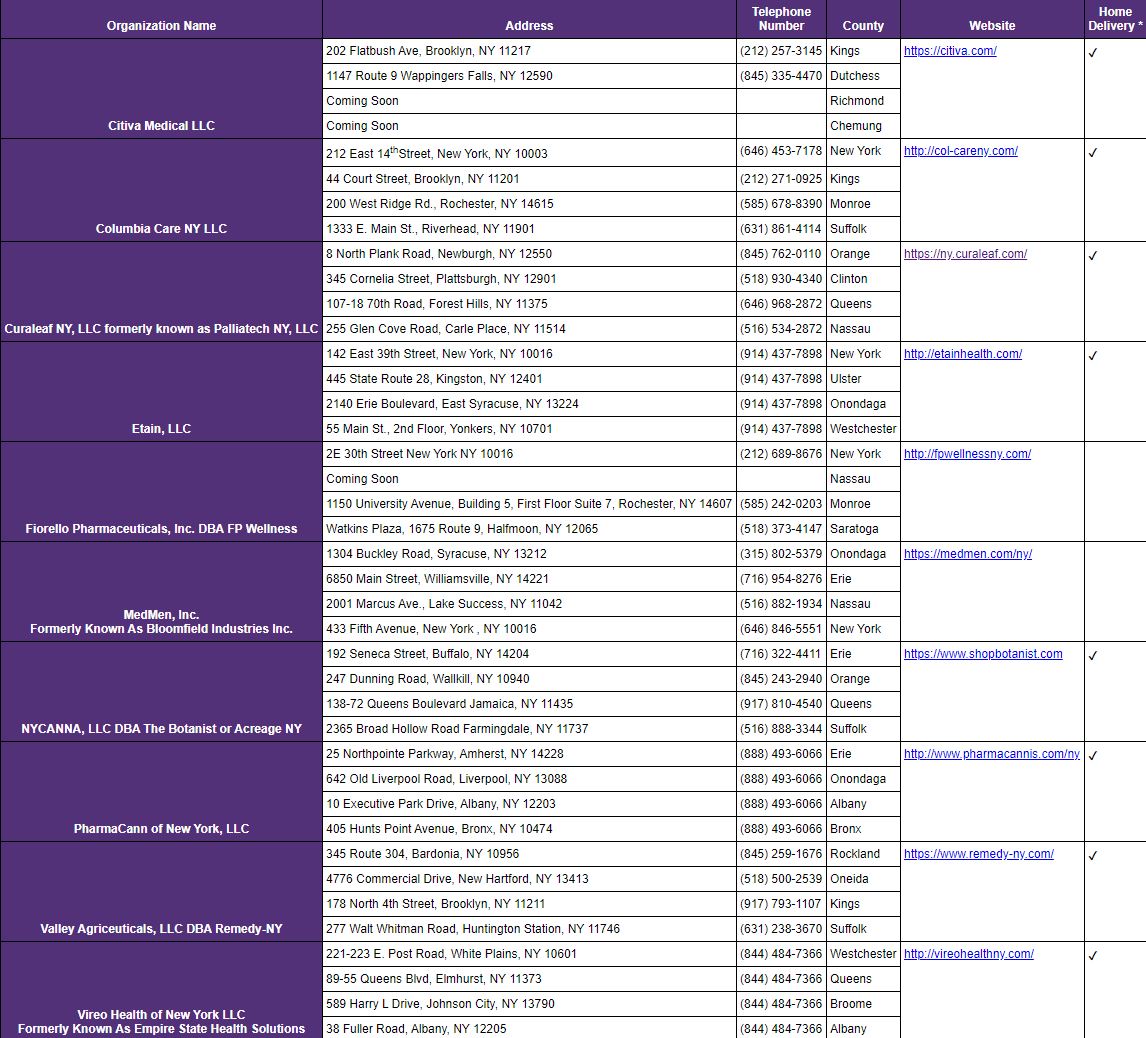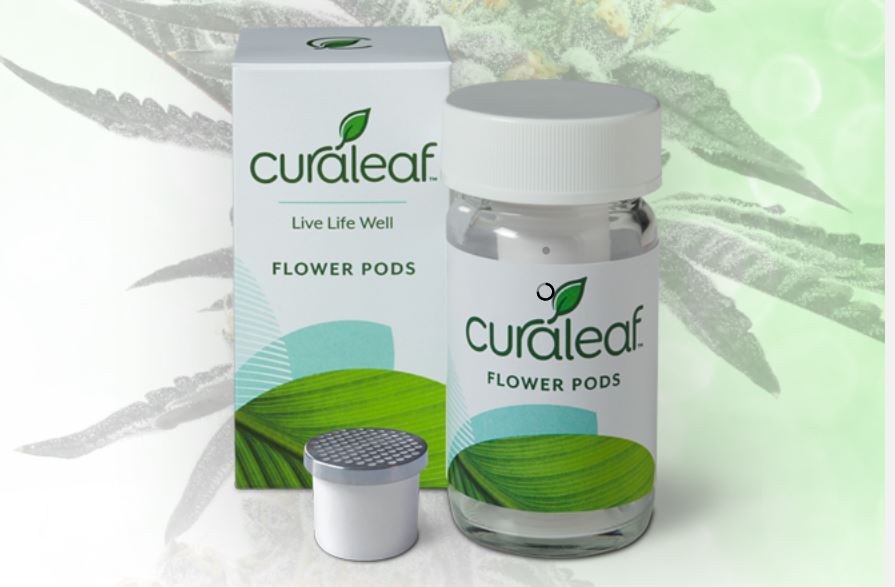New York’s medical cannabis program has developed substantially over the past several years and is now dominated by publicly traded companies. While it appeared that 2019 would be the year that the Big Apple would become the 12th state to legalize the recreational use of cannabis, the Marijuana Regulation and Taxation Act failed in the waning days of the legislative session. Despite this setback, many remain confident legalization of cannabis for recreational use is in the cards for New York. In this review, we take a look at the history of the medical cannabis program, the existing marketplace and the potential for future growth.
History and Program Rules
On September 11, 2014, New York Gov. Andrew Cuomo signed into law the Compassionate Care Act. It allowed doctors to prescribe marijuana in a non-smokable form to patients with serious ailments that are included on a predefined list of 14 conditions ranging from HIV/AIDS to Parkinson’s disease and which must be accompanied by a complicating condition such as chronic pain, seizures or wasting syndrome. A complete list is available here.
Pursuant to the Compassionate Care Act, there is a $50 application fee. However, the Department of Health is currently waiving the $50 fee for all patients and their designated caregivers.
The Medical Marijuana Program, which operates under the state’s Department of Health, oversees the certification, purchase and dispensing of medical marijuana. The program also handles the certification of practitioners and dispensaries.
A patient would have to be certified by a practitioner to obtain medical marijuana and that practitioner would be a physician, trained by and registered with the Department of Health, licensed by the state, and qualified to treat the serious condition for which the patient is seeking treatment.
The excise tax on medical marijuana in New York is a seven percent tax on the gross receipts from medical marijuana sold or furnished by a registered organization. The sale of medical marijuana, as well as the sale of related products to administer medical marijuana, are exempt from sales tax.
Since its initial enactment, however, a number of improvements have been made to that law including:
- The authorization of nurse practitioners and physician assistants to certify patients for medical marijuana, thus expanding the scope of who can prescribe.
- Increasing the number of organizations registered to manufacture and dispense medical marijuana.
- Expanding the list of qualifying conditions to include chronic pain, post-traumatic stress disorder and any condition for which an opioid may be prescribed.
- Allowing registered organizations to wholesale to other registered organizations.
- Allowing registered organizations to deliver medical marijuana products to the homes of patients or their caregivers.
As a result of this expansion, the number of certified patients skyrocketed by a whopping 1,124 percent to more than 112K, while the number of registered medical practitioners increased from 611 in 2016 to 2,638 as of January 2020.
Existing Market
The U.S. Census Bureau estimates that New York state’s population in 2017 was 19.85 million, of which 14.9 million (74.9 percent) are 21 or older. Using NYS-specific data on marijuana use as reported in the 2016 National Survey on Drug Use and Health, the New York State Department of Health estimated 8.5 percent, or approximately 1.27 million residents, currently use marijuana in one form or another.
The most common conditions among medical marijuana patients are: chronic pain (53.16%), neuropathies (14.59%), and cancer (12.8), according to New York Department of Health data. Patients between the age of 51 and 60 make up the greatest percentage of certifications (23.06%), followed by those between the ages of 61 and 70 (19.21%).
There currently are ten vertically integrated registered organizations in New York state, each with the ability to operate up to four dispensaries. At this time, 37 of the possible 40 dispensaries are open.

The first five companies obtained their licenses in In July 2015. These original five were all private at the time, but three have commenced trading publicly subsequently:
- Etain, a privately held women-owned cannabis business
- Bloomfield Industries, which in February 2017 was acquired by MedMen (CSE: MMEN) (OTC: MMNFF)
- Vireo Health (CSE: VREO) (OTC: VREOF)
- Columbia Care (NEO: CCHW) (OTC: CCHWF)
- PharmaCann, LLC, one of the largest private cannabis operations in the U.S.
In July 2017, five more providers were licensed. All of the second group of license holders trade publicly at this time, though they were private at the time they received the licenses:
- New York Canna, DBA The Botanist, which was acquired by Acreage Holdings (CSE: ACRG) (OTC: ACRGF)
- Fiorello Pharmaceuticals, which was acquired in August 2019 by Green Thumb Industries (CSE: GTII) (OTC: GTBIF)
- Valley Agriceuticals, whose parent company Gloucester Street Capital LLC, merged with Cresco Labs (CSE: CL) (OTC: CRLBF) in October 2019;
- Citiva Medical, which was purchased in February 2018 by publicly traded iAnthus Capital Holdings (CSE: IAN) (OTC: ITHUF)
- PalliaTech NY, which in August 2018 changed its name to Curaleaf (CSE: CURA) (OTC: CURLF) before going public
These organizations can grow, manufacture, distribute and dispense medical marijuana to patients who have an approved medical condition.

Increasing demand is expected to favor the entry of new players into the market.
Form factors include: vape cartridge/pen, capsule, tablets, oil, oral spray, oral powder. Smoking medical marijuana is not allowed, though pods for vaporization are permitted. Edibles also are prohibited. Patients need to contact each registered organization to learn which products are available. Pricing varies among registered organizations.

Legalization for Adult-Use
On July 13, 2018, the New York State Department of Health released its report on the assessment of the potential impact of regulated marijuana. It concluded that the positive effects of a regulated marijuana market in New York outweighed the potential negative impacts, thus giving rise to expectations that the market would greatly expand.
Based on population usage, and the assumption that marijuana sells on the illegal market at $270 to $340 an ounce, the New York Department of Health estimated potential total tax revenue in the first year with a price of $297 and illegal market consumption of 6.5 million ounces ranges from $248.1 million (with a 7% tax rate) to $340.6 million (with a 15% tax rate). The estimated potential total tax revenue, with a price of $374 and illegal market consumption of 10.2 million ounces, ranges from $493.7 million (with a 7% tax rate) to $677.7 million (with a 15% tax rate).
In 2019, New York decriminalized the possession of amounts up to 2 ounces, making it a violation instead of a crime. Fines range from $50 for amounts of less than one ounce, to $100 for quantities between one and two ounces.
In his 2020 State of the State address, Gov. Cuomo reiterated his commitment to legalization for adult-use. He has promised to introduce legislation once again this year and has proposed the creation of a new state agency to oversee recreational and medical marijuana, as well as hemp. His proposal also would limit recreational sales to those over 21 to possess up to one ounce of marijuana and up to five grams of concentrated cannabis.
New York’s medical marijuana regime does not allow certified patients to cultivate or grow cannabis. Under the proposed adult-use regulations, consumers also would not be permitted to cultivate cannabis for personal use.
The legislation would also promote social equity in the cannabis industry through various programs. Cuomo said he hopes to work with Connecticut, New Jersey and Pennsylvania to coordinate policy reform efforts. He also has called for the State University of New York to create a cannabis and hemp research center.
Conclusion
While the medical cannabis program was slow to start in New York, several changes have helped it grow substantially. The market is served by a limited number of vertically integrated providers, with eight of the 10 licenses held by publicly traded companies. Looking ahead, New York state could become one of the largest state markets for adult-use should the state move forward with legalization.
